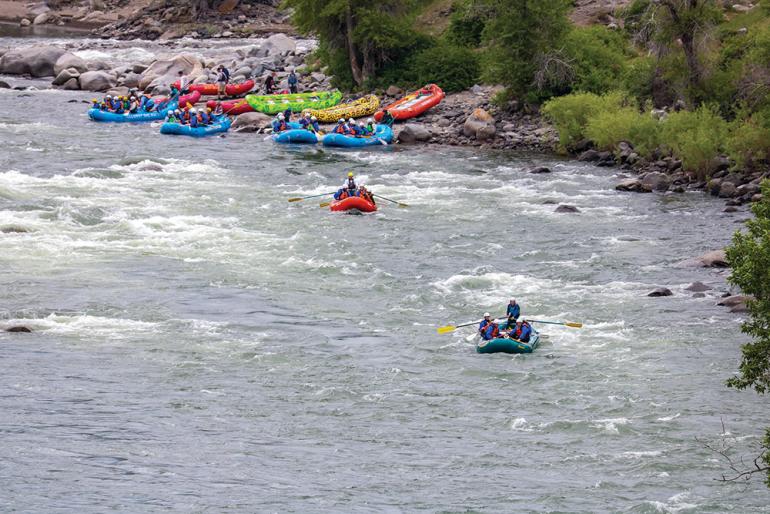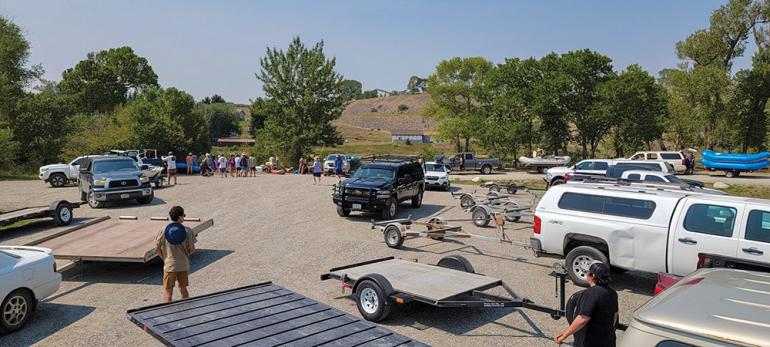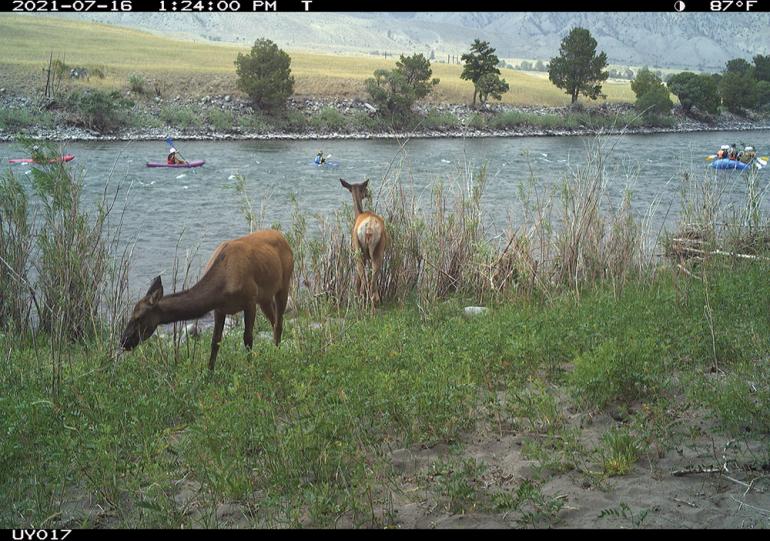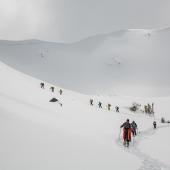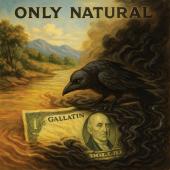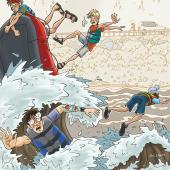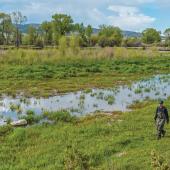Crowd Control
A Yellowstone River research project.
Mention “the Yellowstone River” and very little else needs saying. Standing at Artist Point overlooking the Grand Canyon of the Yellowstone, the viewer is treated to one of the iconic tableaus of wildness. The same river downstream on its 692-mile, undammed journey to join the Missouri River, has a tamer look, having become much more a mirror of the many demands humans have placed on it.
For many of us, our Yellowstone is the upper river, from its headwaters inside the Park and downstream through Paradise Valley, Livingston, and out toward the Crazy Mountains—a reach renowned for its blue-ribbon fisheries, scenery, and rich mosaic of wild and working lands.
In the fall of 2018, at a meeting of the Upper Yellowstone Watershed Group (UYWG), Montana Fish, Wildlife & Parks (FWP) was invited to discuss river-recreation planning. It soon became clear that the first essential step in any river-recreation planning was to develop baseline information on current conditions and uses. And it became abundantly clear that no such information existed for the upper Yellowstone.
In response, the UYWG, in cooperation with numerous organizations, agencies, businesses, universities, and individuals, launched a recreational-use study of the upper Yellowstone River in 2020. The study, now entering its third year, seeks to establish a baseline of recreational use and evaluate the “carrying capacity” of access sites with boat-launch facilities. River users were surveyed on their overall experience. A vital part of the study is to identify “best practices,” issues, and impacts, and collaboratively work with all interests to identify and sharpen a set of priority actions for consideration. To give a sense of the river, its users and the study, let’s look at three of its main components.
Who, Why, with Whom?
In 2020, over 1,000 individuals were surveyed. They came mostly from Park (39%) and Gallatin (33%) counties. They came to the river as couples (21%), family (21%), with friends (24%), by themselves, or all the above. They came to fish (37%), raft and drift (19%), kayak, paddleboard, canoe (10%), and to swim, picnic, and just get outdoors. As to their on-river experience, 99% rated their on-river experience “very satisfactory.”
River Access
Are river access sites meeting demand, and if not, when are they stressed and what improvements can be recommended? To get at this question, the study conducts sweep counts of vehicles and trailers several times a week during prime river season at the 15 access sites from Gardiner to Livingston. Most of the time, there is plenty of parking and easy access to boat ramps. But on warm weekends and holidays, prepare for delays and no parking. The access sites are also where ramp and river etiquette become critical. This picture of the launch ramp at Loch Leven on August 14, 2021 tells the tale.
How Many People, Doing What, When?
To establish baselines of recreational use, we set up time-lapse cameras. All located on private land, thanks to cooperative landowners, the cameras take an image every 6-20 seconds, depending on river flow. The time-stamped and geolocated images are then analyzed for type of craft, number of individuals, and whether they are fishing. The study has no interest in “who is with whom” or other personal details, and the images are treated as confidential except for selected images being used for outreach purposes (such as the image here). The resulting data offers a rich tapestry of use that, once all data is analyzed, offers a snapshot of use in time and space.
The study will continue collecting data during the upcoming 2022 river season, while the critical step of identifying issues and collaboratively working to develop solutions remains well underway. The study could not be conducted without the generous support of area businesses, individuals, and foundations, as well as many organizations and agencies. To learn more about the program and learn how you can participate, go to the Upper Yellowstone Watershed Group’s website at upperyellowstone.org.
Whitney Tilt has spent a career working in fisheries, wildlife conservation, and private-lands management. He serves as the executive director of the AFFTA Fisheries Fund and actively works with the Upper Yellowstone Watershed Group.

